
Having a Baby
During the pregnancy of our first child, I kept a journal. I don’t keep journals. I don’t feel like I have much to say in them. This was different. The whole experience was new, and there was a lot to learn.
This post is a cleaning up and stitching together of that journal. It has ups and downs. It has useful tips and useless anecdotes. I’ve tried to keep as much in as I can, to capture the whole experience. A lot is missing.
# Beginning
It became real on October 19th, 2018. We paid for an 8-week scan after having multiple positive pregnancy tests. Normally the first scan is at 12-weeks, but we were impatient.
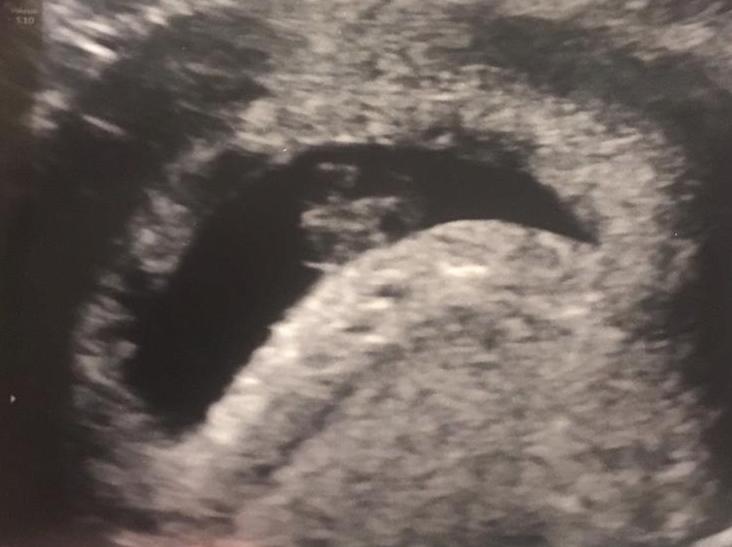
We called him “jellybean” for the longest time, but Sophie had decided on the name Max years prior. I liked it, too.
# Gestation
This is the fancy word they use instead of “pregnancy.” We started noticing a bump at around 10-11 weeks, and by the 12-week scan we had a recognisable little human. It surprised me how much like a real person they look at such a young age.
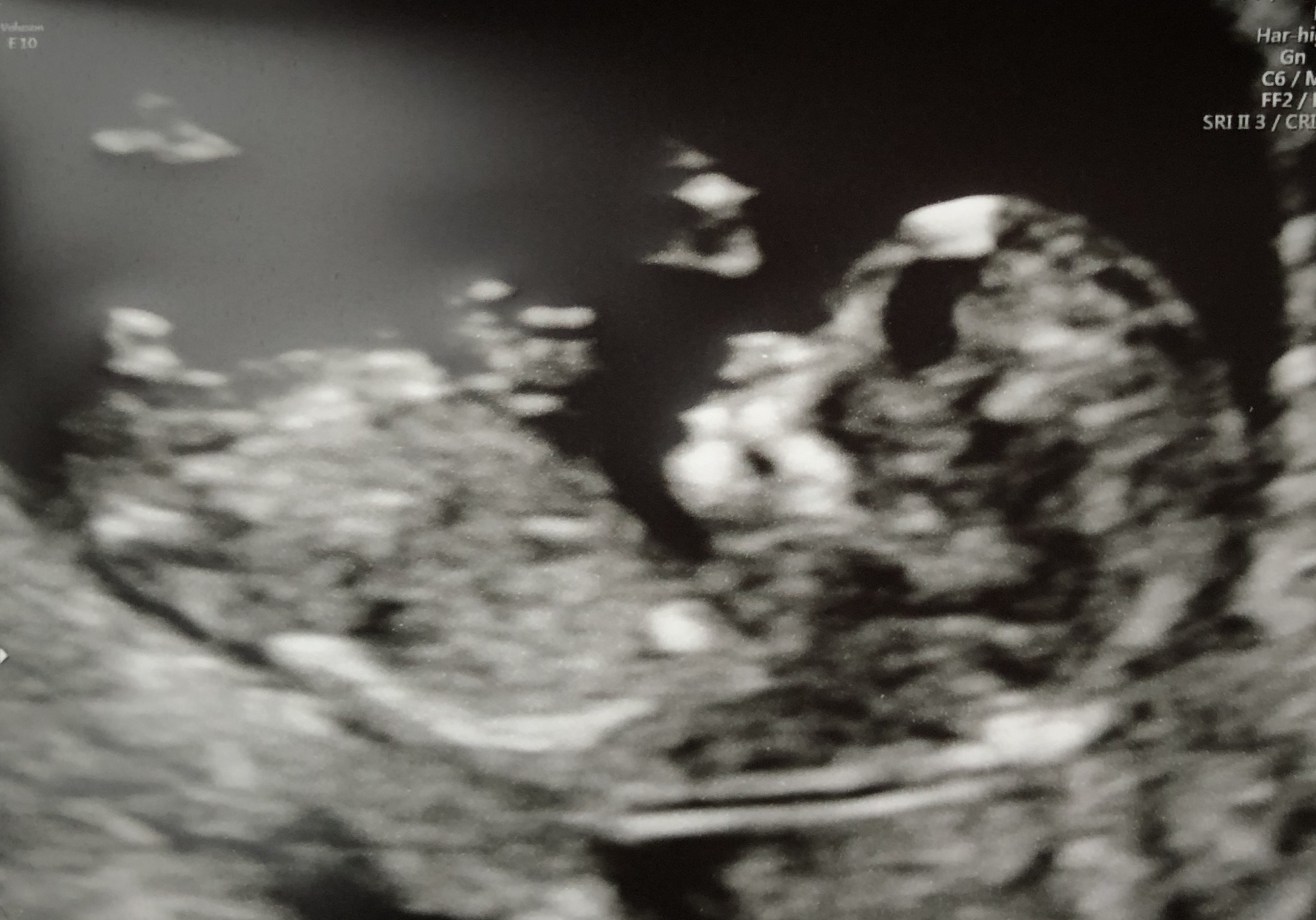
The advice is to wait until 12 weeks before you tell people you’re pregnant. We didn’t, I don’t think anyone does. The idea is that the further through the pregnancy you get, the higher the odds you’ll make it all the way. The odds significantly improve at the end of the first trimester.
At 20 weeks you go for another scan and it’s at this one you can find out the sex of the baby. Not always, sometimes the baby refuses to co-operate, but for us it was obvious he was a boy. We had asked about the sex at 12 weeks. We’re first-time parents, we didn’t know. The sonographer sighed at us. “No.”
Toward the end of the second trimester we started to prepare all the stuff that we would need. You’re not supposed to buy car seats second hand, so we bought one new. We also caught a Mothercare closing down sale and got a buggy half-price. I had a lot of fun crashing it in to things to horrify onlookers.
Things I would recommend expecting parents buy: a waist-height changing table (your back will thank you), a yoga ball (bouncing makes babies sleepy), and a Perfect Prep machine if you’re bottle feeding. Things I would recommend you don’t buy: baby clothes. Everyone else will buy those for you.
At the start of the third trimester we learnt that Sophie had gestational diabetes. It’s a common complication, affecting 1 in 20 pregnancies. Sophie had to stab herself in the finger to take her blood sugar levels 4 times a day until the day she gave birth. It didn’t look any fun, and at first she struggled to draw enough blood for the tests. This meant she had to do it multiple times per reading sometimes. I couldn’t help, either, as she had to get used to doing it herself because I would be at work half of the time she had to them.
The worry with the diabetes is that because you’re not breaking down the sugar you take in, it means there’s more sugar going to your baby. This makes baby grow faster, and if it grows too fast it won’t be able to get out safely. Fortunately we had no worries there, as Max was consistently under the average weight until the day he was born.
Gestational diabetes meant we were now classed as a “high risk” pregnancy, and were assigned a consultant. Consultants are the top of the food chain, they are who the buck stops with when it comes to patient care. When we met our consultant, she was with a colleague. They had obviously worked together a long time, they were able to finish each other’s sentences and made a lot of jokes. I liked them a lot.
There was another minor complication in the timing of the pregnancy, which was that 7 months in to it we were planning to get married. The wedding planning had begun some time before we knew we were pregnant. The only thing it ended up changing was the dress.
The third trimester is also when we did some parenting classes. In the UK we have the “National Children’s Trust,” or NCT. They set up classes that last a couple of days where parents who are all due around the same time learn about how to look after their baby.
I remember almost nothing from the NCT classes. Their primary value, given we paid around £200 to attend, was the group of parents we instantly became friends with. It is literally a scheme where you pay for new friends, and it is worth it. We all still talk every day.
Toward the end of the pregnancy Sophie started wearing my t-shirts. I didn’t mind, except they fit her really well. She also became very tired, and spent most evenings asleep on the sofa. The calm before the storm, in a lot of ways.
Max’s due date came and went. This is normally not a worry, babies are late all the time, but the gestational diabetes makes getting him out a little more pressing.
There are a bunch of things you can do to try to bring on labour. A lot of them are myths but some of them are legit. Having sex has been shown to work. If it doesn’t, you can go for a “sweep.” This is as icky as it sounds. A midwife will sweep their finger around your cervix, separating parts of the amniotic sac from the cervix, releasing hormones that may start labour. Or may not.
If all of this fails, a hospital-based induction becomes necessary. On the 5th of June this is where we found ourselves.
# Induction
One of the things I was worrying about as the partner in this process was getting to hospital when labour began. I don’t drive. Fortunately we had friends nearby who had offered to be our chauffeurs when the time came. We had a WhatsApp group called “Labour A-Team” and everything.
It was a relief when we got a phone call at lunch time on the 5th of June asking if we could make our way to the hospital. No panicking, no rushing. Our Labour A-Team still drove us, as the cost of parking at the hospital is astronomical. Packing our bags in to their car almost made it feel like a holiday.
The first thing we tried in hospital was a “pessary.” This is a strip of what felt like sandpaper that is inserted in to the vagina. Its job is to release synthetic oxytocin, which is a hormone that is known to help bring on labour (among many other things, you’ll hear a lot about oxytocin if you’re having a baby.)
I didn’t know this beforehand, but induction is a slow process. In my mind it sounded like an immediate intervention. You induce labour and wham!, things get going. Not so. There’s also the fun fact that hospitals can only deliver so many babies at a time. Our hospital had two surgical theatres in the maternity ward, and one must always be kept free for emergencies. If they're both occupied, no one can be induced. This means an emergency C-section can block all other deliveries.
Maternity wards are also loud. Midwives visit each bay every 4 hours to take observations, or “obs.” I thought this was an odd choice of abbreviation, given it’s also the abbreviation for “obstetrics.” Obs includes blood pressure, pulse, and a measure of baby’s heartbeat. There are also people in active labour who are yet to be transferred to a “delivery suite,” a private room where you can deliver your baby in relative comfort with your own personal midwife. People in active labour are not known for their serenity.
As there’s not a lot to do on maternity ward, and there are only so many crosswords I can bring myself to do per day, you can’t help but eavesdrop. Staff talk quite openly, and some the things we overheard were scary.
The maternity ward we were on was operating with 6 fewer staff than usual. Most of these being, ironically, people on maternity leave. The ward was closed to new arrivals as there weren’t enough staff to safely look after them, and they were directing people to other quite far away hospitals.
We also overheard that both surgical theatres were occupied multiple times, meaning any emergency that did come up was in a queue.
June 7th, 48 hours after we arrived, a midwife checks on us. No real progress. It’s time to move on to the next stage of induction. This involves manually breaking the amniotic sac, and has a high chance to kick start labour. The problem is that it has to be done in a delivery suite, and there are none available. As soon as one becomes available they’ll let us know.
What if we go in to labour before that? Best not to think about it.
June 8th, 72 hours after arrival. I want to talk about the chairs. There were 6 bays in our maternity ward, each with a hospital bed, a chair, and a curtain that can be drawn all the way around the bay. No two chairs were the same, and no single chair was comfortable. When we arrived 3 days prior, there was only one other person in the ward so I had a chance to sample my options. I went with a rock-solid reclining chair, thinking that the reclining functionality would outweigh the hardness when it came time to sleep.
I was wrong. The chair reclined, but reluctantly. You had to be pressing back hard on it for it to stay in a reclined position, and lying on the chair was an exercise in balance and stillness. Twice I woke up to being flung forward because I had moved in my sleep.
At around 5pm on June 8th, 77 hours after arriving, a delivery suite became available and we were moved down to it. What a difference! Spacious, private, personal bathroom, soft mats to lie on. I felt like royalty.
A little while before we moved down to the delivery suite, Sophie’s contractions started getting painful. She had been contracting most of the time we had been in hospital, but until now they had only been a minor annoyance. Good timing.
# Labour
Things started happening faster when we moved to the delivery suite. We moved at around 5pm and the plan was to break Sophie’s waters around midnight. If this didn’t start labour within 2 hours, she would be put on an oxytocin drip. After days of nothing, this was welcome but nerve-wracking.
We had our own midwife now whose job it was to guide us through this process. She was patient but firm. She explained the various things in the room and talked us through what she was doing as she did it. When nothing needed doing we talked casually about how she got in to midwifery, it was nice.
Sophie was given a meal which was not optional. She was told she would need the energy, and they needed to take her final blood sugar reading before going in to labour.
At 7:40pm someone came around to put in a cannula. This is a small flexible tube that’s injected in to the hand so that if any drugs need administering, they can be, and quickly. Sophie has awkward veins, and it took three attempts to get it in right. Her wrists were swollen afterwards.
At 21:20pm contractions were much more frequent and much more painful. This was good and bad news. Good: things are progressing. Bad: things hurt more now. I do what I can, holding her and offering encouraging words, but can’t help but feel useless.
1:05am, June 9th. In the 4 hours that have passed the contractions have become exponentially more painful. I’d been keeping an eye on the readings, which I had quizzed every midwife about so far. There’s a line that measures contraction intensity, and it goes from 0 to 127. When it hits 127, the midwife presses a button that seems to make it go back to 0. I’m assuming this is like when you put a bowl on some scales and press a button to reset the scales to 0 with the bowl on them. This button was getting pressed a lot.
The progression of painkillers we were offered was: gas and air, ibuprofen, codeine, epidural. Gas and air made Sophie projectile vomit, and ibuprofen and codeine did nothing for the pain. Epidurals are no joke. Before having one I had to read and sign a form detailing the risks, as Sophie was in too much pain to read anything. It could have said anything, I think I would have signed it regardless.
After signing the form you need to wait for an anaesthetist to become available. We got lucky, one had just come out of theatre and was able to squeeze us in before his next thing. He quietly and professionally pushed a needle in to Sophie’s spine, and within minutes the pain was gone. The needle part was worrying, as every contraction causes Sophie to convulse. I didn’t ask what happens if she has a contraction while the needle was in there.
At 2:15am I found myself lying on the floor. In all of the excitement I pulled a muscle in my back. Now she had the epidural in, Sophie was back to her normal self. She had a button she was allowed to press if she felt the pain coming back, but other than that she said all she could feel was the pressure of each contraction. None of the pain. She began extracting our midwife’s life story. I took a picture of the ceiling.
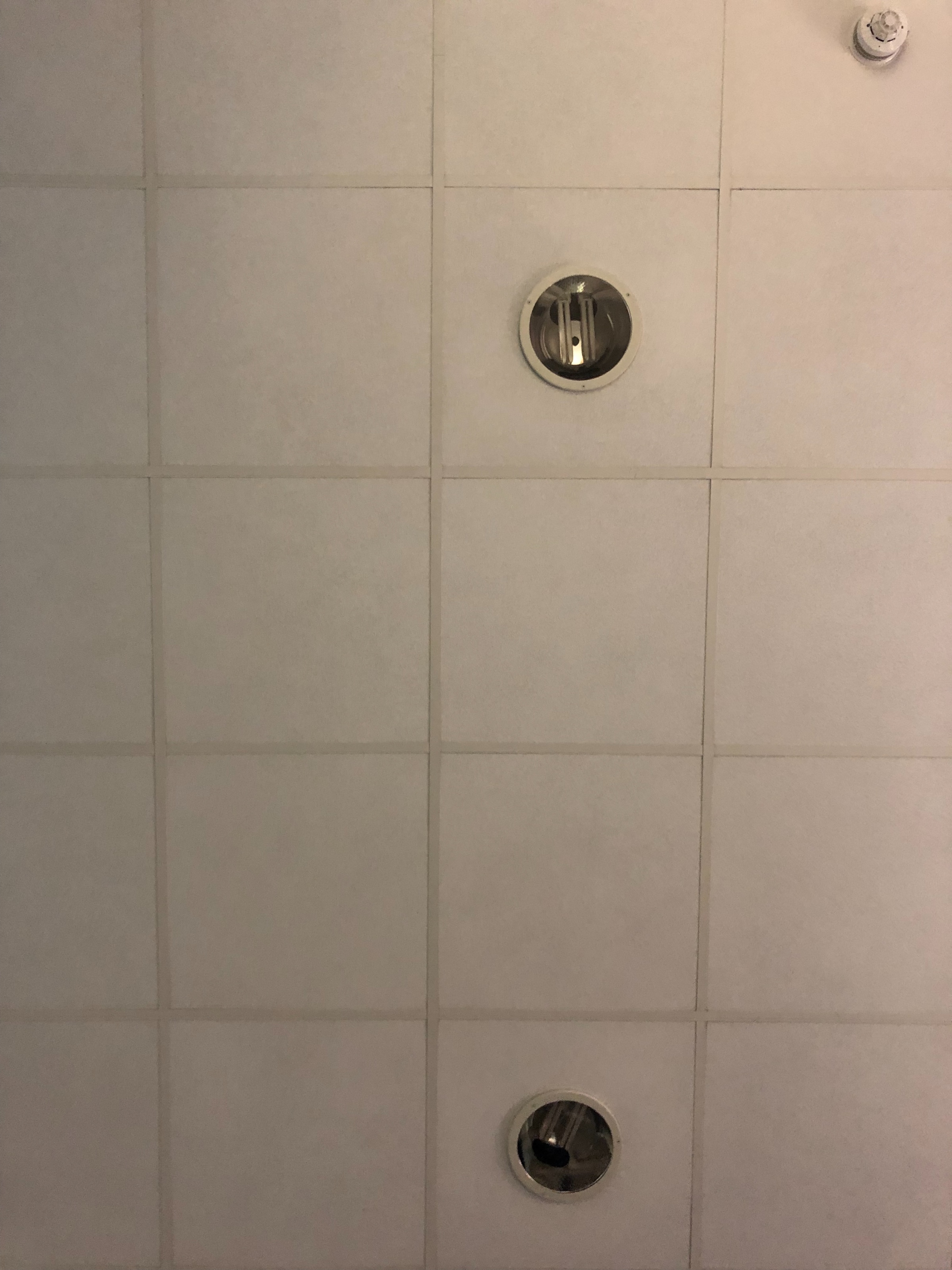
At 3:15am our midwife checked how dilated we were. This refers to diameter of the cervix opening, which expands during labour to allow the baby to come out. 10 centimetres! This is the ideal size, and it happened much faster than anyone was expecting. The end is in sight. The plan was to wait for an hour for the body to do its thang and push the baby on its own a bit before starting pushing.
# Delivery
An hour passed, some progress was made, and it was time to start pushing. One of the downsides to having an epidural is that it makes you numb from the waist down. It’s difficult to push when you’re numb from the waist down. As each contraction was coming, the midwife told Sophie to push as if she was pushing a poo out. Sophie said she tried but it was really hard to tell if it made any difference.
In the downtime between pushes, I couldn’t help but look at the monitors. The line tracking Max’s heart rate had become erratic. I could tell the midwife was keeping an eye on it, too. She must have caught me looking at it because she explained that it’s not worrying yet, but does create a sense of urgency.
When we were first brought down to the delivery suite, one of the parts of the room that was explained to us was a big red button above the bed. This was for the midwife to press in an emergency. When pressed, a team of people would very quickly pour in to the room. It’s important to remain calm.
To my surprise, when she pressed the button I did remain calm. This was due, in part, to noticing a friendly face: our consultant. She had popped in about 6 hours earlier to say hi, and that if all went well it would be the last time we saw her. It was good fortunate she was working tonight, as we later learned she was covering a shift for someone else.
Her assessment was that Max had his umbilical cord wrapped around him in such a way that no amount of pushing was going to get him out. To make matters worse, he had pooped. This can get in to the lungs and make it hard for him to breathe, so getting him out was now an extremely high priority.
The first port of call was a bit more pushing under the supervision of our consultant. When that failed, it was time to try an “instrumental delivery.” This is where you grab the baby with a pair of tongs (“forceps”) and pull it out. I watched as our consultant clipped two halves of a pair of forceps together, yawning as she did.
By god do they pull, too. Our consultant was a fairly small woman, but she had one foot on the bed and lent back on those forceps with all her weight. The baby didn’t budge.
Our consultant wasn’t fucking around, either. Before she started with the forceps she explained what she was about to do. She looked Sophie directly in the eye and said: “this is extremely important: when I say push you must push, when I say stop you must stop immediately. Do you understand?”
As well as our consultant, there were around 8 other people all doing things. I’ve no idea what. Sophie was vomiting again so it was my job to fetch and hold cardboard bowls. I focused on it intently.
Despite all of this the baby wouldn’t come out. In between pulls our consultant did an episiotomy. This is where a cut is made at the bottom of the vagina to make the opening larger. The cut was extended twice as the pulling got more urgent.
After what felt like forever, at 6:23am, the baby just came out. All in one go. Cord well and truly wrapped around his neck, to which our consultant pointed and said: “ha, knew it.” Baby was put on mummy for its first feed as the medical team worked on sewing mummy back up.
While this was happening, our consultant quipped: “I have good news. Your baby has a perfectly functioning bottom. He is currently pooing on you.”
Straight after baby came out I was handed a pair of strange circular scissors. I wasn’t expecting it, and must have looked confused. “Did you think I was going to take this moment away from you?” our consultant smirked. All the scenes in films where people snip through the umbilical cord in one clean motion are a filthy lie. It’s extremely tough, and takes a few goes.
After a few minutes of relief 2 things went wrong in quick succession. Max started struggling to breathe, and Sophie started haemorrhaging.
Max was taken and placed in an incubator on the other side of the room. A paediatrician started examining him. I felt he was in good hands, and focused on my wife.
Sophie had turned a worrying shade of white. I asked what was happening. No-one answered, or no-one heard me. An alarm started going off, with a robotic voice repeating the phrase “major obstetric haemorrhage” over and over. There were now a lot more people in the room.
Sophie asked me how Max was. I didn’t know, and didn't want to get in anyone's way. Someone suggested I go and see him, though, so I did. The paediatrician introduced himself to me as Si, short for Simon, I think, and asked me if I was worried. I said yes, confused by such an obviously silly question.
He explained to me that the baby had breathed in some of its own poo while in the womb. This isn’t usually a problem, and will clear on its own shortly after birth, but he was keeping an eye on him to be on the safe side. This was reassuring, but it was at this point I made a critical mistake.
I looked back at Sophie.
Sophie herself was fine, she was asking me how the baby was, but her blood was everywhere. It was visibly pouring out of her and pooling around the bed.
Our consultant was pressing on part of Sophie’s stomach with one hand and trying to stop the blood flow with another. A very tall man was inserting another cannula in to her arm, a bag of blood ready to go. Someone else was injecting her with something to help her blood clot. Someone else was cleaning up vomit. Various other people were standing around attentively, holding things that might be needed.
People kept asking me if I consent to this, do I agree to that, explaining what each thing was before it was used. I wish I could have signed a form up front stating I don’t know fucking anything about medical science and I trust the hospital staff entirely. Each second wasted getting my consent could have been a second Sophie needed.
I started thinking about how impossible it would be to raise a baby on my own. I started thinking about what I would do if I had to go back home with neither a wife or a child. I couldn’t breathe.
Despite an overwhelming desire to collapse in to a crying mess in the hallway outside, I kept calm. I breathed, and a few minutes later our consultant announced that the blood loss was under control.
# Recovery
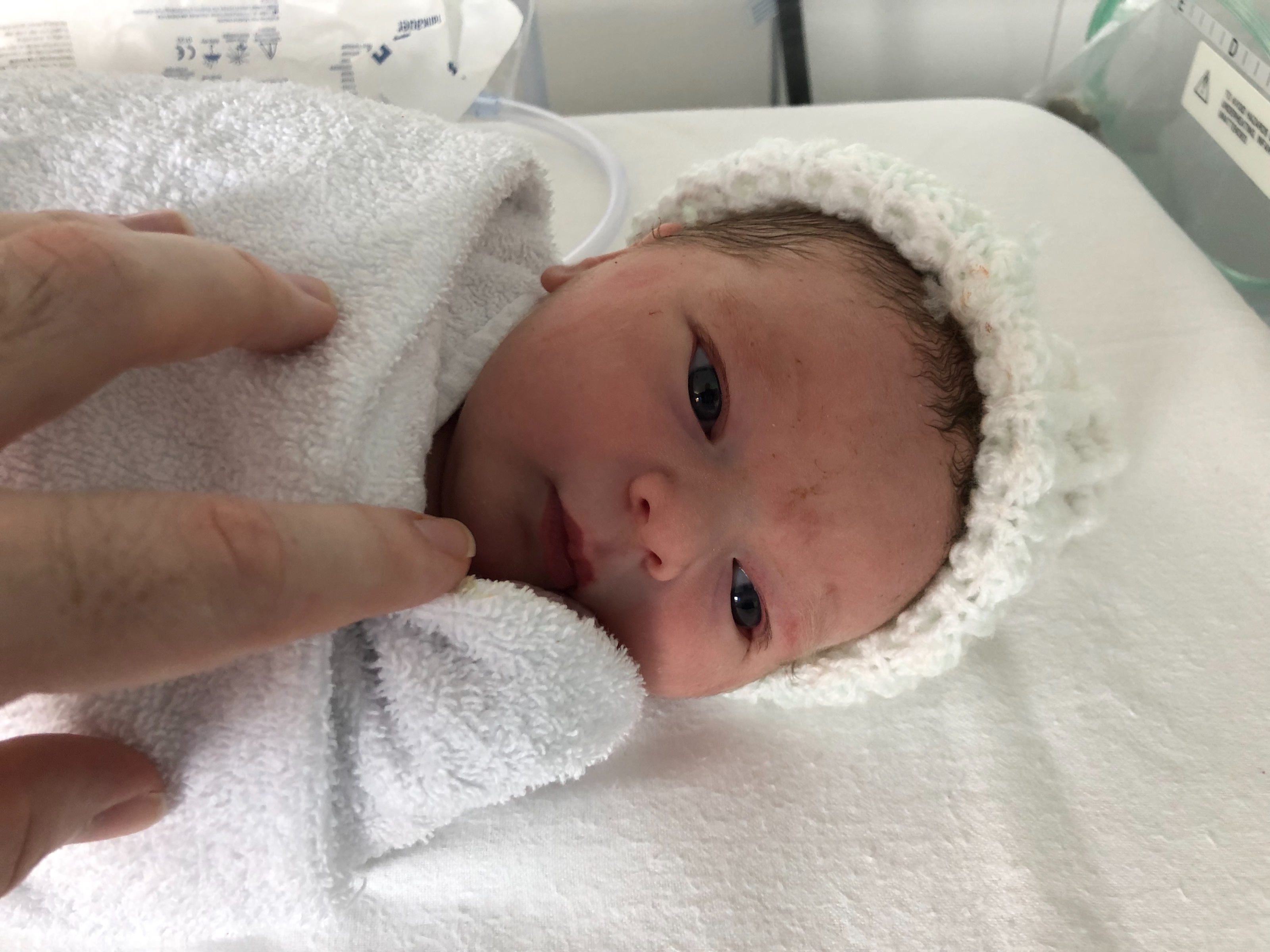
The problem with giving birth at 6:23am after spending three days in hospital barely getting any sleep is that you’re tired, but you have to start being a parent straight away. I’d just pulled an all-nighter, Sophie was asleep, the medical team had dispersed and it was just me, the baby, and a midwife.
The first day I flew mostly solo. We had to wake Sophie up every hour or two to feed Max, but other than that it was him and me. Babies don’t need a whole lot of attention at the beginning. You need to change them when they poop, feed them when they’re hungry, cuddle them a bit, but other than that they sleep. The only problem is that they won’t go longer than an hour without needing something.
What they tell you about the first poops is true. It is an awful substance. It sticks to skin in much the same way treacle does, but isn’t delicious. The upside, though, is that all of the subsequent poops are trivial in comparison.
The midwife stood by me as I changed this first nappy. She wasn’t patronising or bossy or judgmental. She talked me through the steps, answered my questions, and smiled at me when it was done. Her presence was reassuring, and she made me feel well looked after.
Monday, 10th of June. 5 days after arriving at hospital to be induced. Sophie’s blood iron levels had gotten very low, so a blood transfusion was needed before we could go home. We’d been moved out of the delivery suite and in to the post-delivery ward.
I thought the pre-delivery ward was loud, this was a whole other level. Rarely did 10 consecutive minutes pass without a baby crying. On top of that, it was kept at 25C at all times to keep the babies warm. 25C is an obscene temperature, and I spent the whole time on this ward damp.
The blood transfusion needed yet another cannula. This brought the total up to three simultaneous cannulas. Sophie’s arms looked like two strange, bruise-based tattoo sleeves.
By the evening the blood transfusion was done, but we had to stay the night to be observed. I had been sleeping in a chair or on the floor for 5 days, so we thought it would be a good idea if I went home and got a proper night of sleep.
After the delivery went south I had phoned my mum to ask if she would come stay with us a little while to help. She arrived that evening, took me home, we got a McDonald’s, watched some half-arsed TV and then I showered and went to bed. It was a feeling unlike any other, and I’ll never take beds for granted ever again.
I woke up on Tuesday the 11th of June at 10am. I had 26 notifications and 3 missed calls. I had been sleeping through my alarm for 2 hours.
We didn’t know this, but the second night is well-known for being a “cluster-feeding” night. This is when babies demand regular feeds and sleep in extremely short bursts. It was also the night Max found his voice. I got up, packed, wolfed down some breakfast and raced to the hospital.
When I got there, Sophie was a wreck. She hadn’t slept all night and a doctor had just visited to tell us we had to stay another night because Max has a heart murmur. These are little holes in your heart that everyone is born with, but they close shortly after birth. Max’s hadn’t, and they wanted to keep an eye on it.
The night of Tuesday 11th was really hard. Max cried a lot, cluster-fed, and wouldn't sleep. Twice we woke up to the sound of screaming, a midwife gently shaking us asking us to feed our baby. We felt like awful parents, but the depth of our tiredness was endless.
Wednesday the 12th of June. A full week after arriving at hospital. By now I was sharing the bed with Sophie and I dared them to tell me I can’t. Max had calmed down on the cluster feeding and was sleeping a bit more regularly. We were still playing a waiting game that felt like it had no end, so we did a load of crosswords and eaves-dropped on the midwives all day, hoping to overhear something about Max.
Some time in the middle of the night on the 13th of June, a doctor visited us from the Neonatal Intensive Care Unit (NICU). She listened to Max’s heart murmur and told us it was small. She could tell because the sound of the blood pumping through it was quite loud, likening it to pushing water through a thin tube. She said she’s need to do an ultrasound on it to be 100% certain it was safe for us to leave, but she didn’t know when one would become available.
Throughout Thursday we really started losing it. The constant noise, lack of sleep, and high temperature was clawing at our sanity. We asked every midwife that came close to us to check on the status of our ultrasound. We asked about discharging ourselves, which they recommended against. We asked if we could schedule the appointment for some time in the future, but they said no.
This nagging must have caused some kind of a stir, though, because at 17:57pm on Thursday the 13th of June we were discharged, with an appointment for an ultrasound the following day. We had spent 198 hours and 20 minutes in hospital. Getting our boy home was the biggest relief I’ve ever had, even if Max wasn’t sure about it.
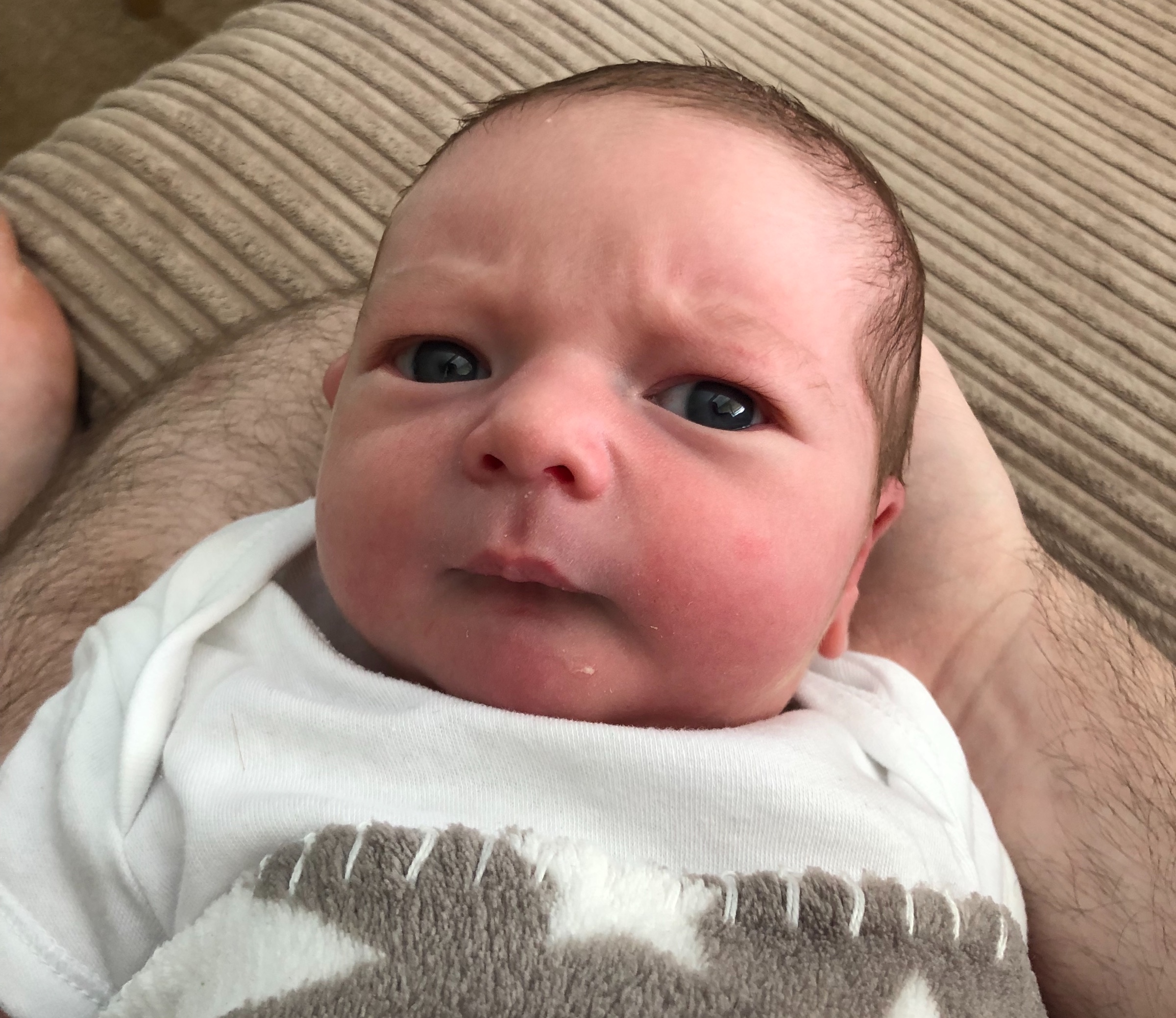
# The days to come
I'd like to write about the first months of parenthood, but this feels like a good point to wrap this post up. It's longer than I planned it to be, and I imagine if you've got this far you need a break! I find it difficult to write about the difficult things in life, and this was one of the most difficult experiences I've ever had. If you read to the end, from the bottom of my heart: thank you.